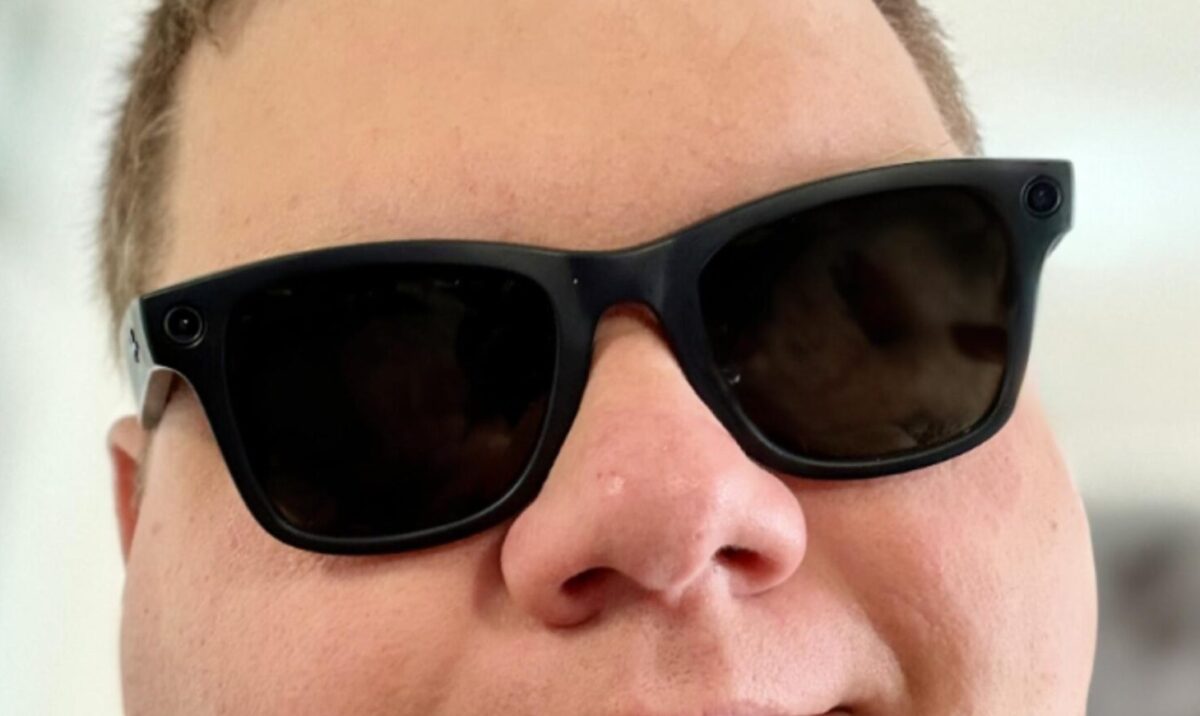There are many Smart Glasses available to support blind and low vision users, but are they for you? Well, that is going to depend on many factors, such as your level of vision and the scenarios you want to use them. In this article, I will outline the categories of smart glasses and their use cases.
There are four categories:
- Bluetooth Glasses – essentially bluetooth headphones in glasses form
- Mainstream Camera Smart Glasses – Smart Glasses with a camera designed and targeted at the general public.
- Mainstream Screen based Smart Glasses – Smart Glasses with screens in the lenses, allowing viewing of content directly on the glasses.
- Specialist Smart Glasses – Smart Glasses designed for the blind and low vision market, to meet our specific needs.
Bluetooth Glasses
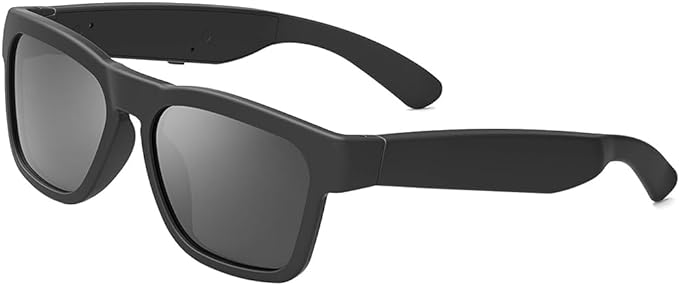
Bluetooth glasses are essentially headphones in the form of glasses. They allow open ear listening, great for using navigation apps while still being able ot hear your surroundings. I have multiple pairs and recommend the Oho Sunshine Bluetooth Sunglasses (Affiliate Link) for cost effective glasses with USB C charging.
Mainstream Camera Smart Glasses
The best example of mainstream Camera Smart Glasses are the Meta RayBan Smart Glasses. These come in around £300-£500 depending the frames and lenses. Being RayBan glasses, you can have prescription lenses. There are a few other companies looking to enter this market in 2025.
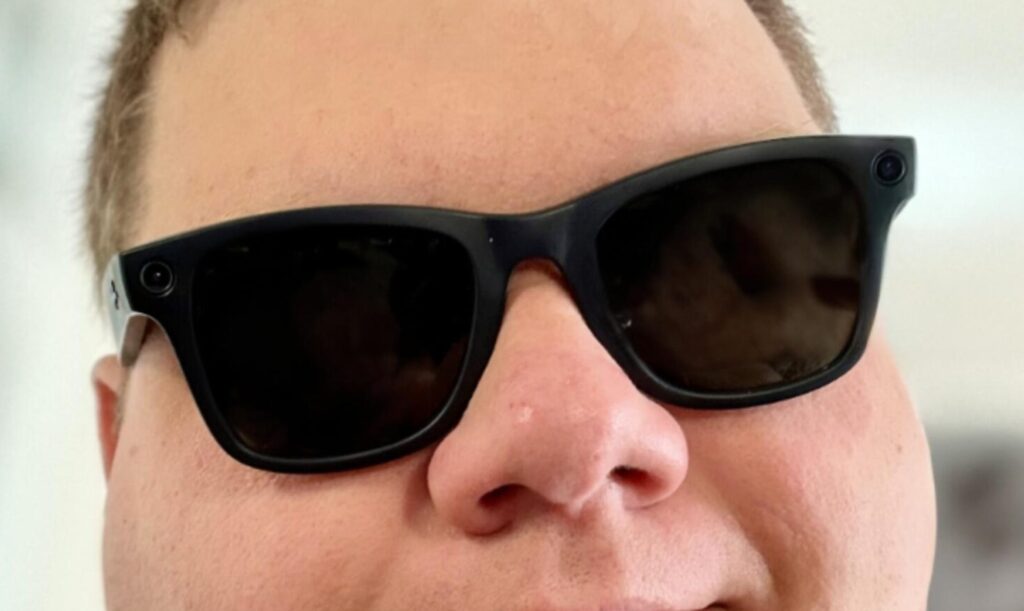
Meta Ray Ban functionality and uses
- Use them to listen to your phone, voiceover/music/make calll
- Ask Meta AI (using your voice), about the time and general questions about weather or history etc.
- Ask Meta AI to take a photo or video – this is hands free and based on where you are looking – making capturing memories easier.
- Ask Meta AI to send a message or read a message from SMS, WhatsApp, or Facebook Messenger
- Send photos and videos via WhatsApp and Facebook Messenger
- Make Audio and Video calls via WhatsApp and Facebook Messenger. When in a video call, you can double tap the camera button on the right glasses arm and it will send your glasses camera feed to the person you have called. Great for calling friends and family for help.
- Be My Eyes – Ask Meta AI to Be My Eyes and it will connect you to a volunteer who can see through your glasses without needing to pick up your phone.
- Video recordings have a max limit of up to 3 minutes
- Battery lasts for about 15 minutes of video recording, so you will need to charge them. Charging is simple, you just put them in the case and it charges. The charging is pretty fast – 50% in 20-30 minutes.
- The glasses use your phone for internet connection, you will need this on and within a signal range to work.
- The big feature we all got excited about, was the one called Look and Tell. This seems to be very intermittent in the UK, some people have it and other don’t. Then it disappears one day even if you did have it. This is where you can ask meta to describe what you are looking at. It is cool, but I found I had to ask lots of follow up questions to get the details. It was not good at reading text, often summarising or adding information that didn’t exist. Meta have stated that this functionality is not available in the UK at this time (Dec 2024).
For more information and links to videos – see my Meta RayBan Review post.
Mainstream Screen based Smart Glasses
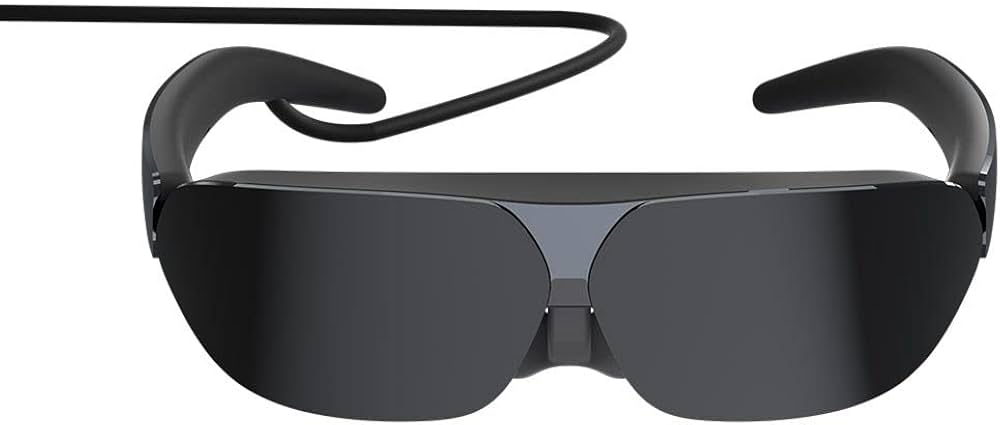
These are glasses that have screens in the lenses. These are often targeted at people watching moves on the equiverlant to a 140 inch screen. As a result, I am yet to hear of them being used for low vision, although they can be connected to computers to provide a large screen. Check out TCL Nxtwear Glasses Product
Specialised Glasses
Specialised glasses/headsets are developed specifically for the Blind and Low Vision community. Specialist devices are typically much more expensive with the cost between £3,000-£10,000. Some of the common products include:
Envision Glasses
The Envision glasses provide the functionality of the Envision App you can get on your phone. They will read text, call people and identify objects. The hardware is based on Google Glass, but Google stopped producing these a few years ago. Envision will support them, but to be honest they are showing their age and the functionality compared to Meta RayBan’s don’t justify the cost in my opinion. I did try the Envision glasses a year or so ago and couldn’t justify the cost for me.
Orcam
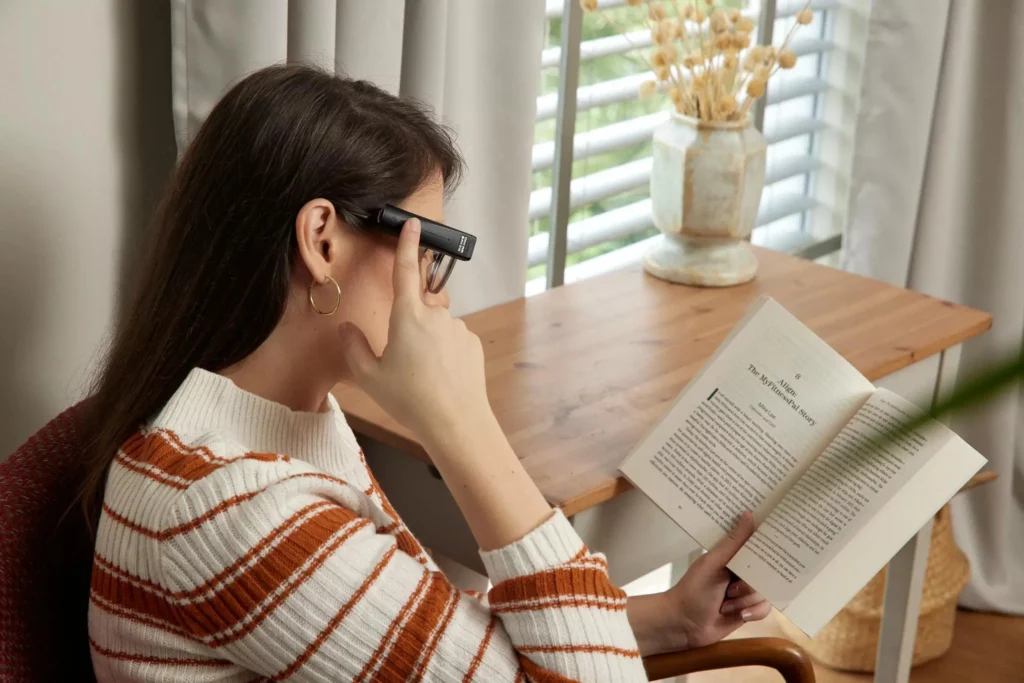
Orcam is device you can attach to your glasses and it will read printed text. It is great as it does it all offline and is accurate. However the cost is high and the parent company are changing focus. I have an old version and wouldn’t buy it again. The startup time is just a little too long and the battery life is too short. I was also disappointed that after just over a year, additional features became available and to get them, I needed to upgrade the device for 3/4’s of the original cost.
For a demo and advice, check out VisionAid – Orcam Product Page
Headsets
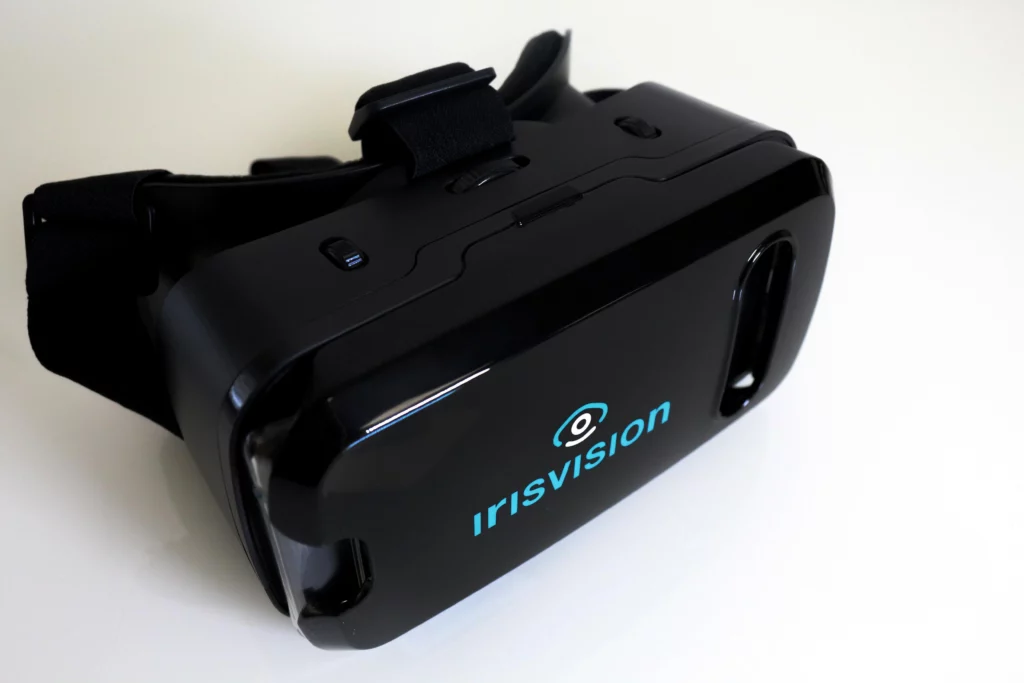
Finally with have a range of products that you put on your head and look at screens, the screens display what the cameras on the front of the device sees, but it adjusts it for different eye conditions. These are great for making the most of your vision, especially if your vision is stable and not deteriorating. You would have to try different ones to find what works for you. VisionAid are very good, they will come out to you and help you select the right specialist tech for you. Check out the VisionAid Iris Vision Product Page amd reach out ot VisionAid to discuss your requirements.
Blind and Low Vision Smart Glasses Conclusion
The smart glasses and AI technology are moving fast, with early AI models available that describe realtime video feeds. If you can afford to buy a product and accept you may only get 12-24 months out of them before they are superceded by the next innovation. It is easier to take that change with Glasses like the Meta RayBan, but the specialised technology is, in my opinion, too expensive to take a chance on. Only you will know the positive impact on your life and if they are worth the costs.
Tell me what you think in the comments below or on X @timdixon82
